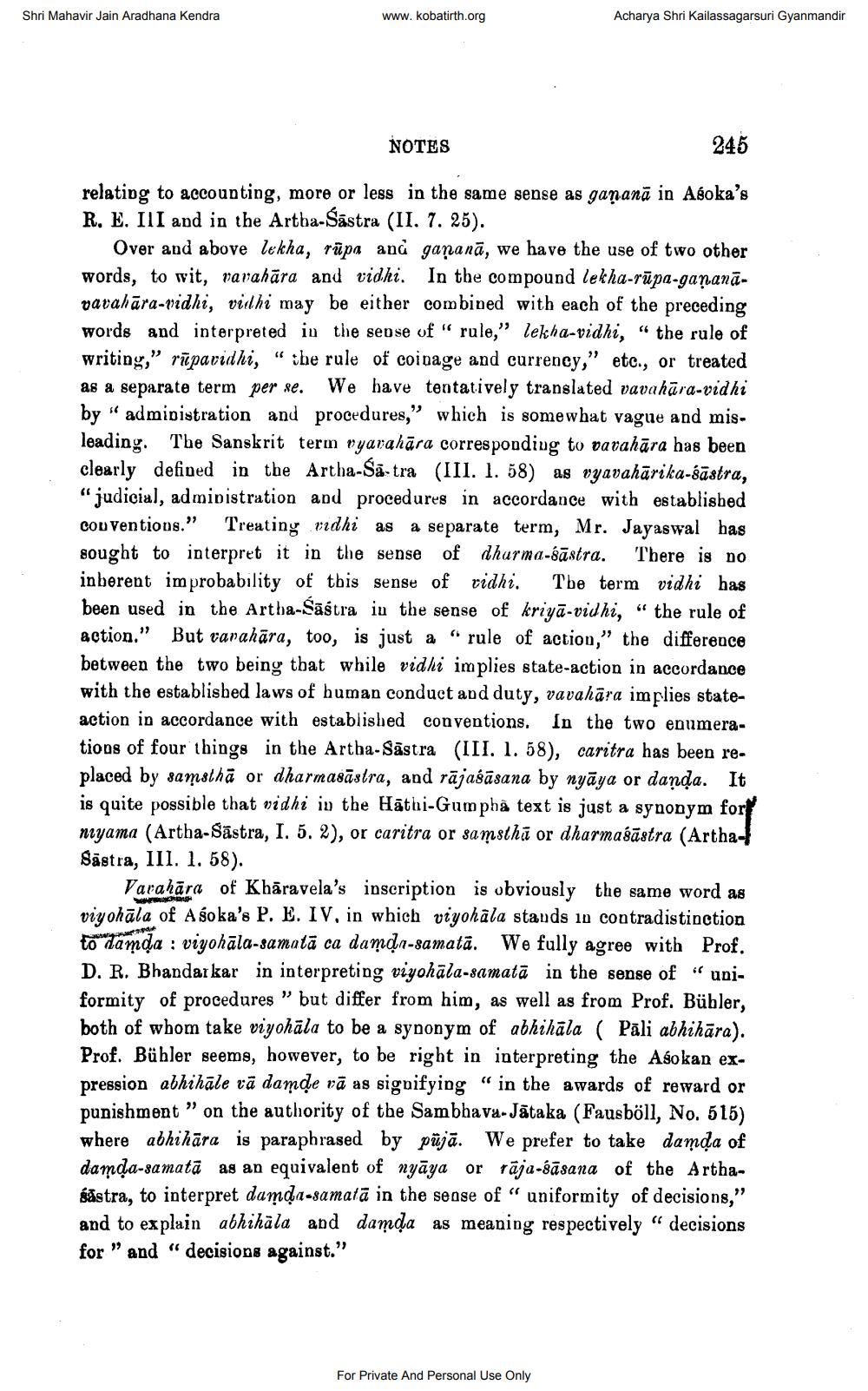________________
Shri Mahavir Jain Aradhana Kendra
www.kobatirth.org
Acharya Shri Kailassagarsuri Gyanmandir
NOTES
245
relating to accounting, more or less in the same sense as gananā in Asoka's R. E. III and in the Artha-Šāstra (II. 7. 25).
Over and above lekha, rūpa ang gananā, we have the use of two other words, to wit, vavahāra and vidhi. In the compound lekha-rūpa.gañanāvavahāra-vidhi, vidhi may be either combined with each of the preceding words and interpreted in the sense of "rule," lekha-vidhi, “the rule of writiny," rīparidhi, “the rule of coinage and currency," etc., or treated as a separate term per se. We have tentatively translated vavahāra-vidhi by "administration and procedures," which is somewhat vague and misleading. The Sanskrit term ryavahāra corresponding to darahāra has bee clearly defined in the Artha-Sa-tra (III. l. 58) as vyavahārika-śāstra, "judicial, administration and procedures in accordance with established cou Ventions." Treatiny ridhi as a separate term, Mr. Jayaswal has sought to interpret it in the sense of dharma-śāstra. There is no inberent improbability of tbis sense of ridhi. Tbe term vidhi has been used in the Artba-Sāstra in the sense of kriyā-vidhi, “the rule of action." But tanahāra, too, is just a “ rule of action," the difference between the two being that while vidhi implies state-action in accordance with the established laws of human conduct and duty, vavahāra implies stateaction in accordance with established conventions. In the two enumerations of four things in the Artha-Sāstra (III. 1. 58), caritra has been replaced by samsthā or dharmasāstra, and rājašāsana by nyāya or danda. It is quite possible that vidhi in the Hāthi-Gumphà text is just a synonym forge niyama (Artha-Sastra, I. 5. 2), or caritra or samsthā or dharmaśāstra (ArthaSāstra, III. 1. 58).
Varahāra of Khāravela's inscription is obviously the same word as vivohāla of A soka's P. E. IV, in which viyohala stauds in contradistinction to hamda : viyohāla-samatā ca damda-samatā. We fully agree with Prof. D. R. Bhandarkar in interpreting viyohāla-samatā in the sense of "uniformity of procedures" but differ from him, as well as from Prof. Bühler, both of whom take viyohāla to be a synonym of abhihāla ( Pāli abhihāra). Prof. Bühler seems, however, to be right in interpreting the Asokan expression abhihāle rā damớe vā as signifying " in the awards of reward or punishment” on the authority of the Sambhava-Jātaka (Fausböll, No. 515) where abhihāra is paraphrased by pūjā. We prefer to take damda of damda-samatā as an equivalent of nyāya or rāja-śāsana of the Arthasästra, to interpret damớa-samatā in the sease of " uniformity of decisions," and to explain abhihāla and damda as meaning respectively “ decisions for” and “decisions against."
For Private And Personal Use Only




